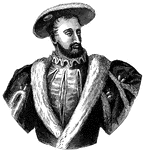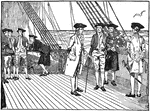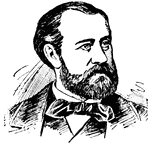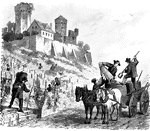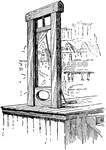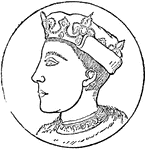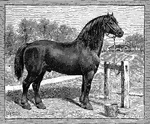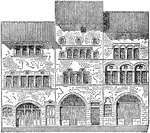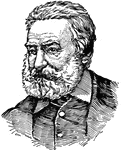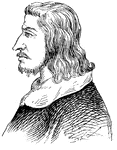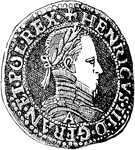
Obverse Side of Silver Franc of Henry III
"A French silver coin and money of account which since 1795 has formed the unit of French monetary system."…
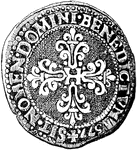
Reverse Side of Silver Franc of Henry III
"A French silver coin and money of account which since 1795 has formed the unit of French monetary system."…
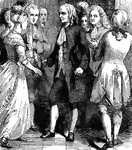
Franklin in French Court
A depiction of Benjamin Franklin in the French royal Court, where he was well-received.

The Franklin Medallion
Franklin was a celebrity in Paris even before his arrival in 1777, and medallions from the faience pottery…

Franks Crossing the Rhine to Establish Themselves on the West Bank as Allies of Rome
A group of Franks, mainly men with a couple of women and children, cross the Rhine River on a wooden…
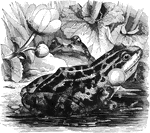
Edible frog
"It is rather larger than the common frog, and its nocturnal croakings are so loud and disagreeable,…

Gable at Notre Dame de Paris
"Gable of the South Transept Door of Notre Dame, Paris; 13th century." -Whitney, 1911

Gable Tower in France
"Gable Tower, Dormans, France. A tower finished with gables on two sides or on all four sides, instead…
Gaine of Renaissance Sculpture
"Gaine. Renaissance sculpture. Maison de Pierre, Toulouse, France. In sculpture, the lower part of a…

Galleries of Cathedral of Amiens
"Galleries of the west front of the Cathedral of Amiens, 13th century, illustrating treatment of galleries…
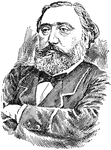
Leon Gambetta
(1838-1882) French statesman and 45th prime minister of France known for his devotion to republican…

Gothic Gargoyle
A gargoyle on the 13th century cathedral, La Sainte-Chapel in Paris, France, an example of Gothic architecture.
Grand Puy of Sarcoui
Grand Puy of Sarcoui, composed of trachyte and rising between two breached scoria cones. Located in…
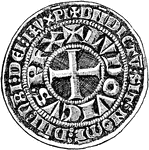
Obverse Side of Gros Tornois
"Gros Tournois of Louis IX. GROS. A coin of relatively large size: applied to silver coins of various…

Reverse Side of Gros Tornois
"Gros Tournois of Louis IX. GROS. A coin of relatively large size: applied to silver coins of various…
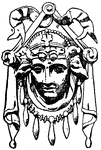
Late French Grotesque
The Late French Grotesque Mask, found in the Theater de Bellecour in Lyons, France. The design was used…
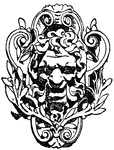
Evil Modern French Grotesque
This Modern French Grotesque mask is found at the Ministry of War in Paris, France. This design used…

Pilaster Grotesque Mask
The Pilaster Grotesque mask comes from a part of a capital pilaster of the tomb of Louis XII in St.…
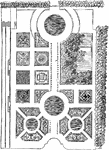
Ground Plan of the Tuileries Garden, Time of Louis XIII
This is the garden plan of the Tuileries Garden in the time of Louis XIII in France. This was the garden…
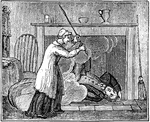
The Treacherous Guest
The treacherous guests. "In the month of June, 1818, a pedler and his wife presented themselves at nightfall…
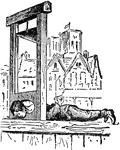
Guillotine
"The guillotine is an apparatus for beheading persons at one stroke, adopted by the National Assembly…

Guillotine
The guillotine was a device used for carrying out executions by decapitation. It consists of a tall…
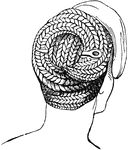
Platted hair
"The mode of platting the hair, and then fastening it with a pin on a needle, is shown in the annexed…
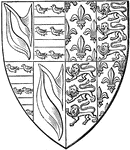
Shield of John de Hastings
"Shield of John de Hastings, K.G., Earl of Pembroke, Quatering De Hastings and De Valence, and impaling…
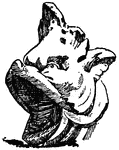
Dolphin Head
This Dolphin Head is shown in the form of a spout, designed by Barbezat in Paris, France.
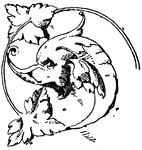
Dolphin Head
This Dolphin Head was designed in a Cathedral in Limoges, France during French Renaissance.
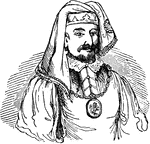
Henry IV
"By embracing the Catholic religion he made his way to the throne of France; and this monarch, Henry…

Hotel de Cluny
An illustration of the Hotel de Cluny in Paris, France. The Hotel de Cluny is a small palace from the…

Church of the Hotel des Invalides
An illustration of the Church of the Hotel des Invalides located in the 7th arrondissement of Paris,…
!["The French town houses differ, moreover, essentially in entire design, which influences their style, from those of other countries. This remark does not apply to those houses which are calculated for one family only, nor to the palatial residences of the nobility and plutocracy, which the French call Hôtels. This difference partly consists in the universal employment of the ground-floor as shops, which are only separated from the street by an opening which is glazed over and supported by individual iron girders. The whole façade consequently appears rather to be suspended in the air than supported architecturally. Over the shop, there is almost always an entresol, that is to say, a low storey between the ground floor and the first storey. The restriction to a certain height which the façade may not exceed has a determinating influence on the form of the topmost portion of the building, inasmuch as above this height the façade is terminated by an offset which slopes backwards over the upper storey [shown here]. Projecting balconies are, moreover, usual along the whole length of the façades, making the divisions into storeys. When these balconies are not met with, the windows of each storey come down to the top of the storey below, or at any rate nearly so, and have iron balustrades in front of them; this construction is partly owing to the storeys from their great number being so low that without this remedy the windows would appear too small and badly proportioned. The lowness of the storeys necessarily exercises a prejudicial effect on the architectural beauty of the façades; so that it is difficult to impart any structural significance to the houses, which consequently only convey and sense of beauty through their details."](https://etc.usf.edu/clipart/73800/73805/73805_house_paris_mth.gif)
Façade of a House in Paris
"The French town houses differ, moreover, essentially in entire design, which influences their style,…
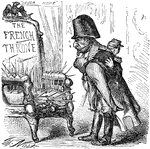
Prince Imperial Being Seated by Napoleon
"The Seat of War." Napoleon III trying to seat the Prince Imperial.
![Les Invalides in Paris, France, is a complex of buildings in the city's 7th arrondissement containing museums and monuments, all relating to the military history of France, as well as a hospital and a retirement home for war veterans. The buildings house the Musée de l'Armée, the military museum of the Army of France, the Musée des Plans-Reliefs, and the Musée d'Histoire Contemporaine, as well as the burial site for some of France's war heroes, notably Napoleon Bonaparte."The principal architectural activity of this period was displayed by Jules Hardouin Mansard, who was head architect to the king and the head of the influential school, as Lenôtre at the same time was principal horticulturist. Mansard built the palaces of Versailles (1647-1708, Marly, the Grand Trianon, as also the Invalides at Paris [shown here]."](https://etc.usf.edu/clipart/73700/73748/73748_invalides_mth.gif)
Invalides at Paris
Les Invalides in Paris, France, is a complex of buildings in the city's 7th arrondissement containing…
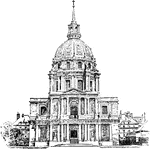
Hôtel des Invalides
A complex of buildings containing museums and monuments, all relating to the military history of France.…
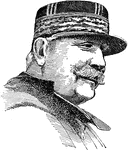
Marshal Joffre
A French Catalan general during the First World War. He defeated the Germans at the First Battle of…


